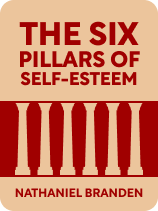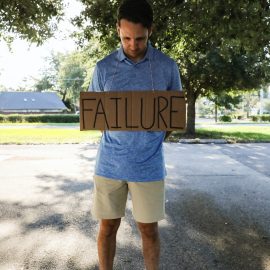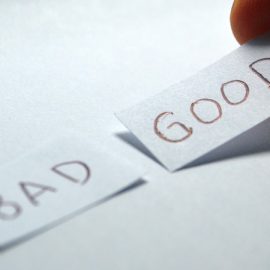

This article is an excerpt from the Shortform book guide to "The Six Pillars of Self-Esteem" by Nathaniel Branden. Shortform has the world's best summaries and analyses of books you should be reading.
Like this article? Sign up for a free trial here .
What are Americans like as a nation? How does the USA culture impact self-esteem?
Americans have a complicated relationship with self-esteem. Specifically, USA culture includes values that support self-esteem and others that are harmful to self-esteem. According to psychotherapist and self-esteem expert Nathaniel Branden, the latter predominates today.
Here’s how the American culture erodes the self-esteem of the nation.
How American Culture Impacts Self-Esteem
Not every culture has such a straightforward relationship with self-esteem. Branden notes that USA culture has elements that both support and are detrimental to self-esteem. On one hand, the Declaration of Independence enshrines personal freedom, which demonstrates how Americans value the individual—not the group. Similarly, Americans of previous centuries had to pave their own economic way instead of relying on the community—which required the capability and worthiness that are integral to self-esteem. On the other hand, other cultural aspects—like the gender roles and the legacies of slavery and discrimination against Black Americans—are harmful to self-esteem, especially among certain segments of the population.
(Shortform note: In Sapiens, philosopher Yuval Noah Harari argues that such cultural contradictions are beneficial. America’s contradicting attitudes and actions related to self-esteem—for example, that the Declaration of Independence enshrined personal freedom when slavery was legal in the United States—lead to cognitive dissonance, which occurs when we simultaneously hold multiple beliefs that are incompatible with one another. Cultures continually attempt to resolve contradictions like these in their myth, which leads us to examine and progress beyond them, allowing for a more creative and dynamic species.)
Branden warns that today, elements detrimental to self-esteem are starting to dominate American culture and leading to various social problems. In the mid-20th century, ideological movements like nihilism, moral relativism, Marxism, and epistemological agnosticism spread amongst American academics. As a result, academics started to teach several ideas that Branden deems anti-self-esteem. For example, they taught that nobody can know what constitutes reality, so our minds are unimportant and unreliable. They also taught that nobody can control their behavior, so nobody can take credit nor be held accountable for their behavior.
(Shortform note: Branden’s rejection of mid-20th-century ideological movements likely reflects the objectivist philosophies he learned from Ayn Rand. For several years, Branden ran a business teaching Rand’s objectivism, which centers on the idea that reality exists whether you can perceive it or not. In contrast, the movements Branden names—nihilism, moral relativism, Marxism, and epistemological agnosticism—all fall broadly under the umbrella of postmodernism, which argues that reality is essentially unknowable and a conceptual construct.)
These ideas created a populace who started to believe that they were victims who were owed more. This ideology also influenced the systems Americans created—which, Branden argues, explains the rise in various societal problems over the latter half of the 20th century. For example, Branden contends that modern welfare systems don’t effectively fight poverty because they teach the poor that their poverty is out of their control. As such, the poor believe that improving their economic situation is impossible and thus don’t try to improve their lives.
[Shortform note: Branden’s emphasis on personal responsibility for your economic situation ignores the reality that many people face systemic inequities—even within the welfare system—that make it harder for them to improve their lives. For example, prior to 2021, even the maximum benefits from the government’s Supplemental Nutrition Assistance Program (SNAP) couldn’t cover moderately priced meal costs in 96% of US counties.]To resolve these problems, Branden asserts, Americans—and every culture—must instead uphold and fight for the elements that support self-esteem. The increase in social issues in modern America proves that cultural values that are anti-self-esteem decrease the self-esteem of its members and thus harm them. Instead, Branden argues, cultures should instill values that support each pillar of self-esteem; this will not only raise individuals’ self-esteem but also create a healthier, happier society.
(Shortform note: The logic of Branden’s argument is faulty: The corresponding rise of anti-self-esteem cultural values and social issues does not prove that those values caused those social issues. In How to Lie with Statistics, journalist Darrell Huff explains that there are several other ways to explain the relationship between two factors. For example, it’s possible that both factors are effects of some other cause, or that they correlate merely due to chance.)

———End of Preview———
Like what you just read? Read the rest of the world's best book summary and analysis of Nathaniel Branden's "The Six Pillars of Self-Esteem" at Shortform .
Here's what you'll find in our full The Six Pillars of Self-Esteem summary :
- Exactly how to behave to improve your self-esteem
- Why you need to take responsibility for your life and actions
- Why so many self-esteem techniques don't work






